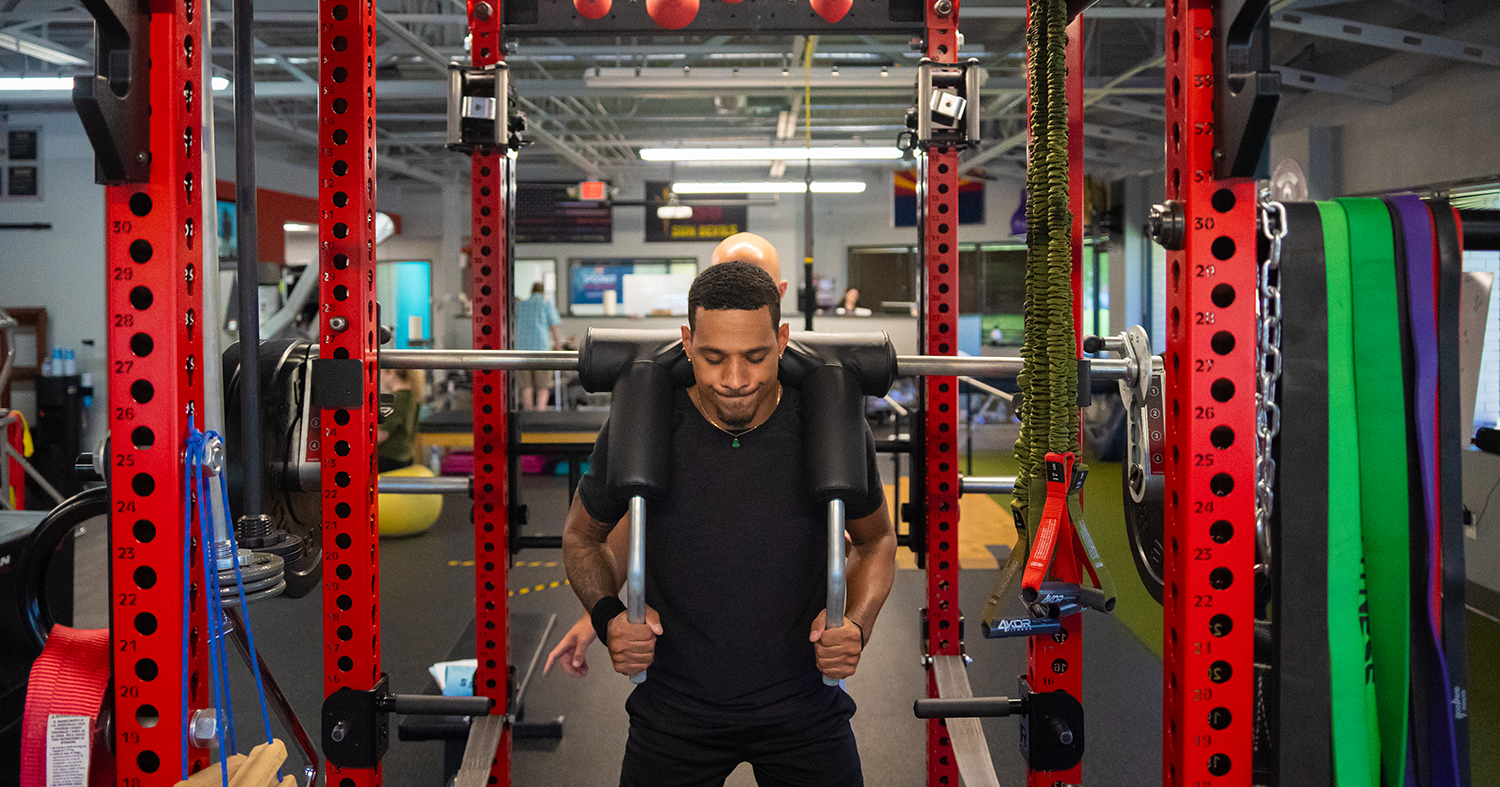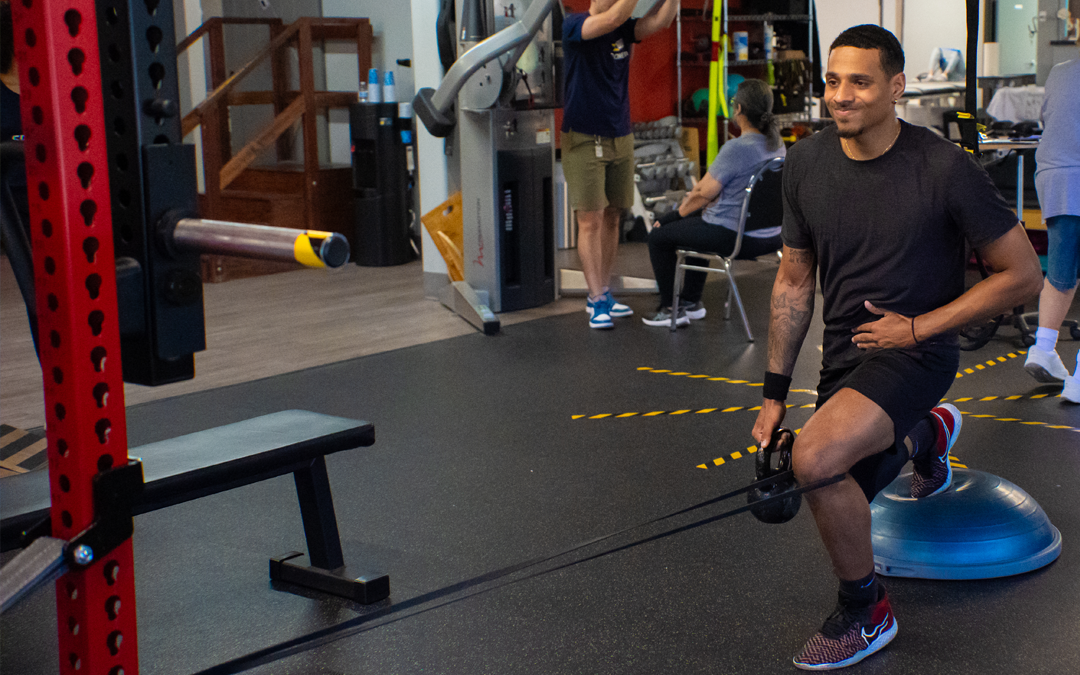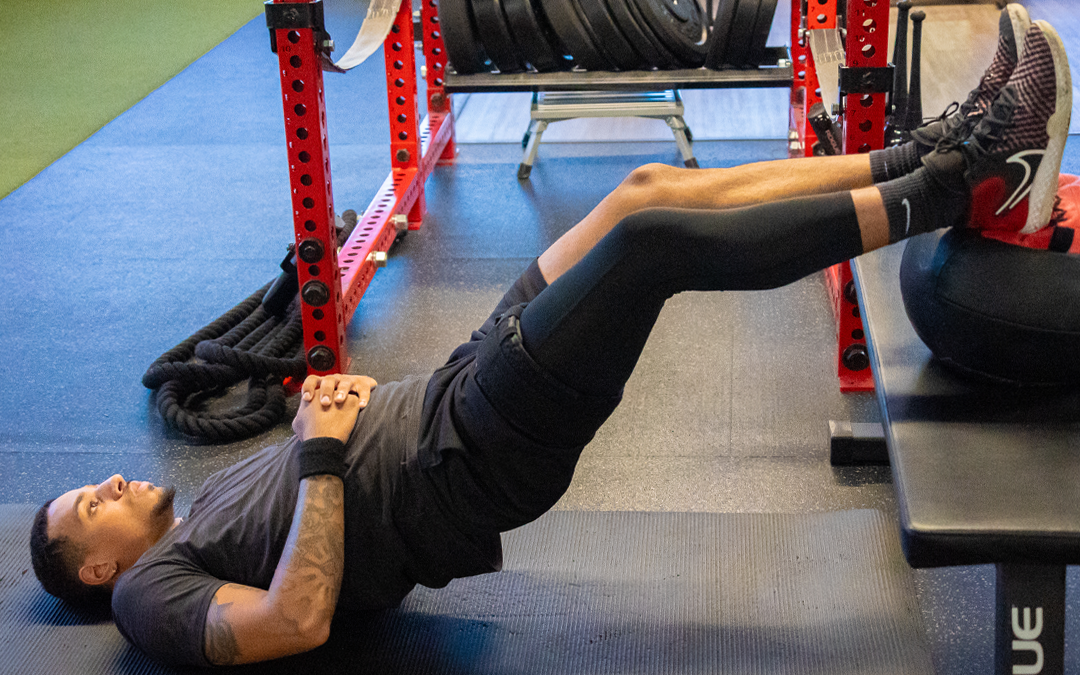By: Ben Kelto, PT, DPT, OCS, CSCS
Our bodies are in a constant state of change but like to live in balance. We are constantly building and breaking down muscle tissue at every activity level, however the amount of movement dictates if new tissue is created, or if existing muscle is absorbed. If there is an injury, like an ACL injury resulting in surgery, the movement aspect is taken away, and the balance is thrown off. ACL injuries are traumatic to the muscles surrounding the joint as they inevitably atrophy.
Atrophy occurs typically in two ways: disuse – no longer activating the muscle – or traumatic joint injury. With traumatic injuries, there is a period of disuse that leads to atrophy; however, the two types of atrophy actually differ chemically in our bodies and in our abilities to reverse the muscle reduction occurring.
Disuse Atrophy
When there is simply a lack of mechanical stimuli, or a lack of utilizing the muscle so the brain stops sending signals to it, a few things happen on the cellular level that contribute to atrophy. The muscle fibers change from a type that is energy efficient to a type that uses energy ineffectively and exhausts quickly. There are many neurological, chemical, and cellular changes that contribute further to this muscle fiber change. Therefore, muscle breakdown continues and also makes it more difficult to build muscle later. However, with disuse atrophy, the easiest way to reverse it is to begin activating the muscle again through movement.
Traumatic Joint Injury Atrophy
In ACL injuries, or other traumatic joint injuries, the exact same type of muscle fiber transition happens as with disuse atrophy. However, the muscle fiber transition is perpetuated by other factors. Initially, post-operative pain and inflammation inside and surrounding the joint interferes with one’s ability to bear any weight as well as move the joint. Later in the healing process, there is fatty infiltration in the fibers of the muscles. This limits the functionality of the muscle and is a large contributor to further fiber transition.
After an ACL repair, your brain and your spinal cord also begin to struggle sending signals to the quads and knee to control movement and reflexively respond. This is actually the body’s way of attempting to prevent further injury, however it is quite difficult to build back muscle after an ACL injury due to the loss of mind-body connection as well as the fatty infiltration. Exercise alone does not seem to fully reverse the effects.
4 PT Interventions
This is not the end of the story, though.
Pre- and post-operatively, physical therapy is key to returning to sport. What needs to happen though is to get the whole picture of the treatment process: how long it is and how to combat atrophy as it attempts to set in. The goal is to gain muscle, and there are ways to do this.
-
Utilizing electrical modalities early post-operatively
In ACL injury recovery, the main focus will be to engage the quads. With the mind-body connection disrupted for a time, it is key to try to reconnect it as early as possible. Using electrical modalities, like TENS or NMES, alongside isometric holds early post-operatively helps restore the mind to muscle connection. As treatment progresses, utilizing these holds and following them by isometric or functional exercises in conjunction with electrical modalities further helps re-establish the mind-body connection.
-
Blood Flow Restriction Training (BFR)
BFR works to recruit muscles through fatigue without heavy resistance that could perpetuate joint irritation and inflammation. Through simple movements, this training allows the muscles to think that they are being stressed to their absolute maximum. The body, in turn, sends chemical signals to the muscles to grow in response to the fatigue being placed on them. This is crucial with ACL injuries where the quads are at risk of significant atrophy. While BFR is commonly used early in the treatment process, it can be used effectively to enhance progressively more intense training later in the rehab process to help prevent plateaus.
Learn more about BFR and find out if it’s something you’d like to try from “Should You Try Blood Flow Restriction Therapy?” on the Spooner blog!
-
Programming for hypertrophy, strength, AND endurance to help with the fiber transition
BFR aids in hypertrophy, or muscle gain, however there are other approaches for exercise differentiation to help avoid plateauing with strength as well as reducing the fiber transition that happens in the muscles. Eccentric exercise is one approach that is extremely effective. While giving resistance to muscles as they are lengthening, there are small tears, or microtraumas, that happen which stimulate muscle growth. Combining eccentric exercise with endurance exercise can maximize muscle growth while also combating fiber transition. For endurance-based work, continuous workload, like doing Spanish squats for time rather than for reps, can target the quads and also combat the fiber fatigue.
-
Addressing the mental side of sport
There is a mental aspect to recovery from an ACL tear or other traumatic joint injury. Athletes who tear their ACL want to run as fast as they once did or have as much power behind their leg. The treatment process is designed to get the athlete back to pre-injury status and grow beyond that level of strength. While physical therapists don’t provide sports psychology (we do know some great ones!), physical therapists utilize two main methods of building confidence in returning to sport: graded activity and graded exposure. Graded activity is where the patient is taken through progressively more challenging sports specific exercises and drills. Graded exposure is participating in sport at the same intensity the athlete experienced pre-injury, but with modifications like limiting run distance or minutes played. This allows the athlete to participate in sport, but reduces the potential factors of fatigue and cumulative impact.
Going through an ACL injury and repair is difficult and a long process, but you are not alone. The Spooner team is here to optimize each session to help you combat muscle atrophy and re-establish the mind-body connection.
If you have recently injured your ACL, you are early post-op, or if you are looking to prevent an ACL tear, schedule an appointment with a Spooner physical therapist today.



